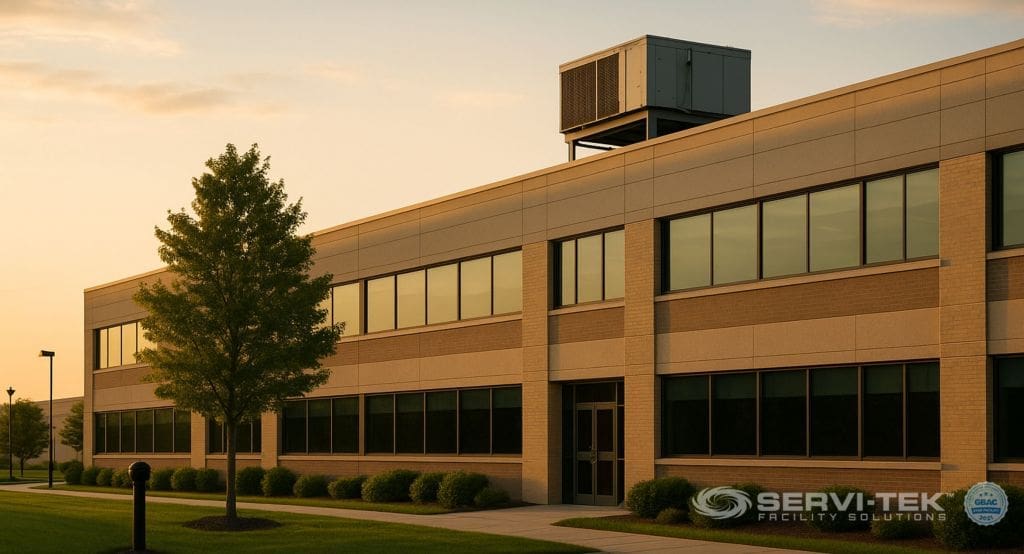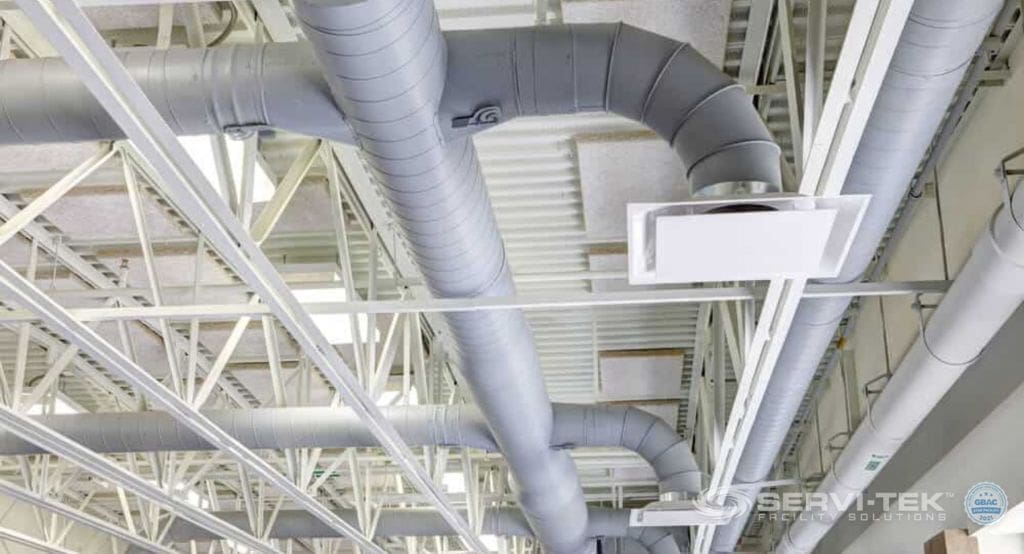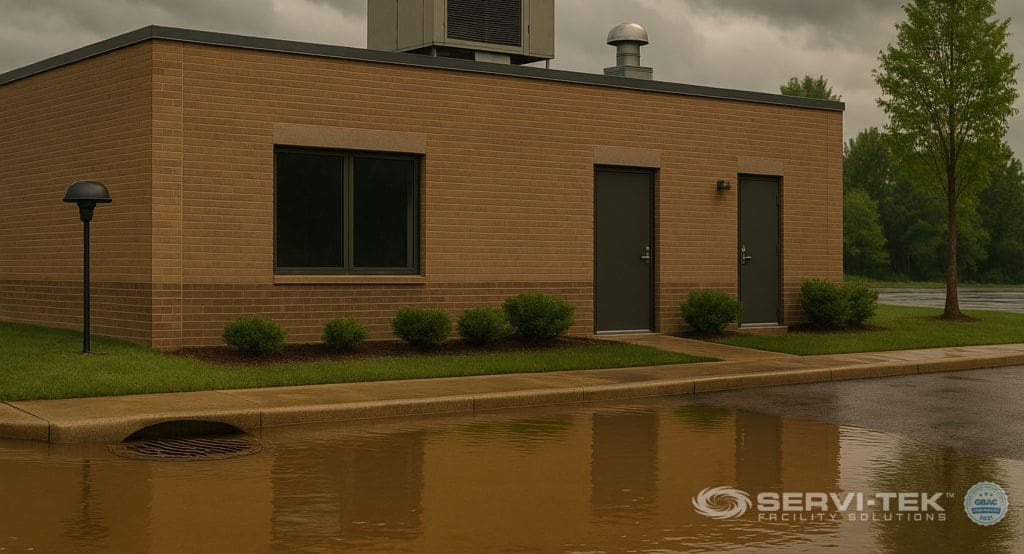Natural disasters are no longer rare events — they are operational threats. According to FEMA, 40% of small businesses never reopen after a major disaster, and commercial properties often suffer prolonged disruptions from property damage, power loss, and delayed recovery coordination.
Even if your building isn’t in a high-risk zone, indirect impacts such as regional power outages, air quality issues, or supply chain disruptions can affect your tenants and operations.
As a property or facility manager, your responsibility isn’t just to clean up after a disaster — it’s to prepare your building to weather it.
1. Know Your Facility’s Disaster Risk Profile

Every building is vulnerable to something. Identifying your facility’s most likely risk scenarios is the foundation for proactive planning.
Each facility faces unique risks depending on its location.
For example, wildfires are a primary concern in states like California, Arizona, Colorado, and Texas, where the main threats include smoke infiltration, compromised air quality, and complex evacuation logistics.
In flood-prone regions such as Florida, Louisiana, Mississippi, and New Jersey, buildings are vulnerable to water intrusion, structural damage, and mold. Coastal properties along the Gulf and Southeastern coasts must prepare for hurricanes, which bring risks like roof damage, power outages, and hazardous debris.
To understand your facility’s specific exposure, consult FEMA’s National Risk Index or your state’s emergency management maps.
2. Core Elements of a Resilient Facility Plan

An actual resilience plan extends beyond sandbags and emergency contacts. It includes systems, staffing, supplies, and recovery timelines.
A. Physical Infrastructure Readiness
- Install flood barriers or water sensors in vulnerable areas
- Secure rooftop units, antennas, and signage
- Trim trees and clear dry brush near wildfire zones
- Verify building envelope integrity (doors, windows, drainage)
B. Utility & Power Preparedness
- Service backup generators and test automatic transfer switches
- Install battery backups for critical systems (lighting, fire alarms, access control)
- Secure HVAC rooftop units from flying debris or hail
C. Emergency System Checks
- Test emergency lighting and exit signs
- Review fire suppression systems, especially in dry regions
- Ensure elevator recall and override systems function properly
3. Wildfire Preparation: Protecting Air Quality and Perimeter Zones

Wildfire season impacts buildings hundreds of miles from the flame, through smoke, ash, and poor visibility.
Facility Prep Includes:
- Replace HVAC filters with MERV-13+ or HEPA-rated options
- Seal cracks and gaps around windows and doors
- Clear brush at least 30 ft. from the building perimeter
- Shut down the outside air intake if smoke infiltration begins
Tip: Provide air quality index (AQI) signage in lobbies during wildfire season to show occupants you’re monitoring the environment.
4. Flood Risk: Drainage and Elevation Are Key

According to the National Flood Insurance Program (NFIP), just 1 inch of water can cause up to $25,000 in damage. Most commercial losses are preventable with simple drainage and elevation checks.
Facility Prep Includes:
- Clean roof drains, scuppers, and gutters before storm season
- Elevate electrical panels and equipment above flood lines
- Use water sensors in basements or low points
- Stock sandbags or deployable barriers near entry points
5. Hurricane Season Readiness: Reinforcement + Communication
For coastal properties, hurricanes pose the most multifaceted threat: wind, water, outages, and evacuation complexity.
Facility Prep Includes:
- Review roof anchors, ballast weight, and water intrusion points
- Create tenant communication protocols: SMS, email, signage templates
- Identify emergency shelter-in-place areas in larger buildings
- Maintain pre-event inspection photos for insurance documentation
6. Build a Facility Resilience Team

It’s not just the property that needs to be ready — your team and vendors must be aligned.
An effective facility resilience plan includes a clearly defined emergency response team. The Property Manager serves as the lead communicator and main point of contact.
The Engineering Lead is responsible for all facility systems, including the building management system (BMS) and backup generators. Janitorial Vendors handle emergency cleaning and sanitation to ensure safety and hygiene. Security teams manage access control and crowd coordination during high-stress scenarios.
Lastly, the Restoration Partner oversees post-event inspection and cleanup, ensuring a safe and efficient return to operations. Each role should have a designated backup and include up-to-date after-hours contact information.
Include backups for each role and keep after-hours contact numbers on file.
7. Downloadable: Emergency Prep Checklist & Planning Map
To help you prepare, we’ve created a Free Facility Disaster Preparedness Checklist & Regional Risk Map.
Covers:
- Wildfire smoke mitigation
- Flood protection
- Hurricane prep actions
- Power outage planning
- Emergency supplies
- Team coordination
Be the Building That Stays Operational
Disasters don’t give notice. Whether it’s a wildfire evacuation or a 3-day power loss after a storm, your tenants expect resilience. At Servi-Tek, we help property managers prepare ahead of time, not just react afterward.
Our team provides:
- On-site walk-throughs
- Facility risk assessments
- Coordination with your restoration vendors
- Emergency systems inspections
Schedule your disaster preparedness consultation now.



